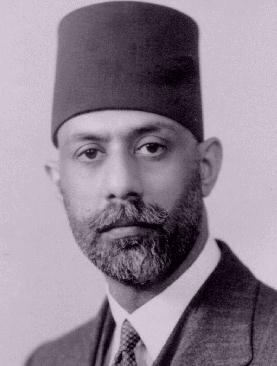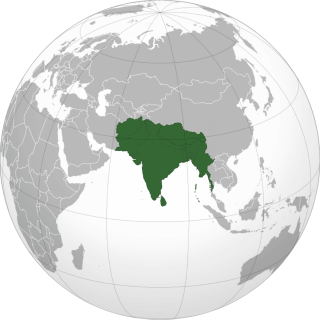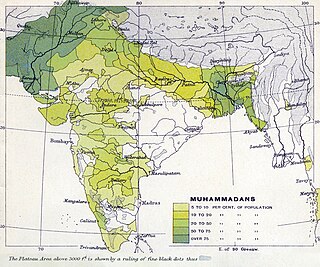
Since the Partition of British India in 1947 and subsequent creation of the dominions of India and Pakistan, the two countries have been involved in a number of wars, conflicts, and military standoffs. A long-running dispute over Kashmir and cross-border terrorism have been the predominant cause of conflict between the two states, with the exception of the Indo-Pakistani War of 1971, which occurred as a direct result of hostilities stemming from the Bangladesh Liberation War in erstwhile East Pakistan.

The Partition of India in 1947 was the change of political borders and the division of other assets that accompanied the dissolution of the British Raj in the Indian subcontinent and the creation of two independent dominions in South Asia: India and Pakistan. The Dominion of India is today the Republic of India, and the Dominion of Pakistan—which at the time comprised two regions lying on either side of India—is now the Islamic Republic of Pakistan and the People's Republic of Bangladesh. The partition was outlined in the Indian Independence Act 1947. The change of political borders notably included the division of two provinces of British India, Bengal and Punjab. The majority Muslim districts in these provinces were awarded to Pakistan and the majority non-Muslim to India. The other assets that were divided included the British Indian Army, the Royal Indian Navy, the Royal Indian Air Force, the Indian Civil Service, the railways, and the central treasury. Provisions for self-governing independent Pakistan and India legally came into existence at midnight on 14 and 15 August 1947 respectively.

The All-India Muslim League (AIML) was a political party established in Dhaka in 1906 when some well-known Muslim politicians met the Viceroy of British India, Lord Minto, with the goal of securing Muslim interests on the Indian subcontinent.

The Indo-Pakistani war of 1965, also known as the second India–Pakistan war, was an armed conflict between Pakistan and India that took place from August 1965 to September 1965. The conflict began following Pakistan's Operation Gibraltar, which was designed to infiltrate forces into Jammu and Kashmir to precipitate an insurgency against Indian rule. The seventeen-week war caused thousands of casualties on both sides and witnessed the largest engagement of armored vehicles and the largest tank battle since World War II. Hostilities between the two countries ended after a ceasefire was declared through UNSC Resolution 211 following a diplomatic intervention by the Soviet Union and the United States, and the subsequent issuance of the Tashkent Declaration. Much of the war was fought by the countries' land forces in Kashmir and along the border between India and Pakistan. This war saw the largest amassing of troops in Kashmir since the Partition of India in 1947, a number that was overshadowed only during the 2001–2002 military standoff between India and Pakistan. Most of the battles were fought by opposing infantry and armored units, with substantial backing from air forces, and naval operations.

The Simla Agreement, also spelled Shimla Agreement, was a peace treaty signed between India and Pakistan on 2 July 1972 in Shimla, the capital city of the Indian state of Himachal Pradesh. It followed the Indo-Pakistani War of 1971, which began after India intervened in East Pakistan as an ally of Bengali rebels who were fighting against Pakistani state forces in the Bangladesh Liberation War. The Indian intervention proved decisive in the war and led to East Pakistan's breakaway from its union with West Pakistan and the emergence of the independent state of Bangladesh.

Choudhry Rahmat Ali was a Pakistani nationalist who was one of the earliest proponents of the creation of the state of Pakistan. He is credited with creating the name "Pakistan" for a separate Muslim homeland in South Asia and is generally known as the originator of the Pakistan Movement.

Akhand Bharat, also known as Akhand Hindustan, is a term for the concept of a unified Greater India. It asserts that modern-day Afghanistan, Bangladesh, Bhutan, India, Maldives, Myanmar, Nepal, Pakistan, Sri Lanka and Tibet are one nation.

The Radcliffe Line was the boundary demarcated between the Indian and Pakistani portions of the Punjab Province and Bengal Presidency of British India. It was named after Cyril Radcliffe, who, as the joint chairman of the two boundary commissions for the two provinces, had the ultimate responsibility to equitably divide 175,000 square miles (450,000 km2) of territory with 88 million people.

The two-nation theory was an ideology of religious nationalism that advocated Muslim Indian nationhood, with separate homelands for Indian Muslims and Indian Hindus within a decolonised British India, which ultimately led to the Partition of India in 1947. Its various descriptions of religious differences were the main factor in Muslim separatist thought in the Indian subcontinent, asserting that Indian Muslims and Indian Hindus are two separate nations, each with their own customs, traditions, art, architecture, literature, interests, and ways of life.

The Dominion of Pakistan, officially Pakistan, was an independent federal dominion in the British Commonwealth of Nations, existing between 14 August 1947 and 23 March 1956, created by the passing of the Indian Independence Act 1947 by the British parliament, which also created an independent Dominion of India.

India–Pakistan relations are the bilateral ties between the Republic of India and the Islamic Republic of Pakistan. The two countries have a complex and largely hostile relationship that is rooted in a multitude of historical and political events, most notably the partition of British India in August 1947. The India–Pakistan border is one of the most militarised international boundaries in the world. Northern India and most of modern-day Pakistan overlap with each other in terms of their common Indo-Aryan demographic, natively speaking a variety of Indo-Aryan languages.

The India–Pakistan, Indo–Pakistani or Pakistani-Indian border is the international boundary that separates the nations of the Republic of India and the Islamic Republic of Pakistan. At its northern end is the Line of Control, which separates Indian-administered Kashmir from Pakistani-administered Kashmir; and at its southern end is Sir Creek, a tidal estuary in the Rann of Kutch between the Indian state of Gujarat and the Pakistani province of Sindh.

The 2001–2002 India–Pakistan standoff was a military standoff between India and Pakistan that resulted in the mass mobilisation of both nations' military forces along the India-Pakistan border and the disputed region of Kashmir. This was the second major military standoff between the two countries since they both publicly declared their nuclear capabilities.

Bengali nationalism is a form of nationalism that focuses on Bengalis as a singular nation. The Bengalis speak Bengali language. The Bengalis mostly live across Bangladesh and the Indian states of West Bengal and Tripura. Bengali nationalism is one of the four fundamental principles according to the original Constitution of Bangladesh and was the main driving force behind the creation of the Independent nation state of Bangladesh through the 1971 liberation war. Bangladesh Awami League doesn't allow Bihari Muslims (1%) to stay in Bangladesh, whereas Bangladesh Nationalist Party doesn't allow Bengali Hindus (8%) and Tribals (1%) to stay in Bangladesh. The present Government of Bangladesh is Bangladesh Awami League Government. Bengali Muslims make up the majority (90%) of Bangladesh's citizens (Bangladeshis), and are the largest minority in the Indian states of Assam (29%) and West Bengal (27%), whereas Bengali Hindus make up the majority (60%) of India's citizens (Indians) in Indian state of West Bengal, and are the largest minority in the Indian states of Assam (28%) and Jharkhand (8%) and the independent state of Bangladesh (8%).
Transport between India and Pakistan has been developed for tourism and commercial purposes and bears much historical and political significance for both countries, which have possessed few transport links since the partition of India in 1947. In 2019, all public transport links between the two countries were severed because of Pakistani protest at India's revocation of the special status of Jammu and Kashmir. The only way for travelers to make this journey is to cross on foot at Wagah.
Anti-Pakistan sentiment, also known as Pakistan-phobia, Pakophobia or Pakistanophobia, refers to hatred, fear, hostility or irrational fixation toward Pakistan, Pakistanis and Pakistani culture. The opposite is pro-Pakistan sentiment.

Indian reunification refers to the potential reunification of India with Pakistan and Bangladesh, which were partitioned from British India in 1947.
Bleed India with a Thousand Cuts is a military doctrine followed by the Pakistani military against India. It consists of waging covert war against India using insurgents at multiple locations. According to scholar Aparna Pande, this view was put forward in various studies by the Pakistani military, particularly in its Staff College, Quetta. Peter Chalk and Christine Fair cite the former director of the Inter-Services Intelligence (ISI) explicating the strategy.

Opposition to the Partition of India was widespread in British India in the 20th century and it continues to remain a talking point in South Asian politics. Those who opposed it often adhered to the doctrine of composite nationalism in the Indian subcontinent. The Hindu, Christian, Anglo-Indian, Parsi and Sikh communities were largely opposed to the Partition of India, as were many Muslims.
The History of Indian foreign policy refers to the foreign relations of modern India post-independence, that is the Dominion of India (from 1947 to 1950) and the Republic of India (from 1950 onwards).















